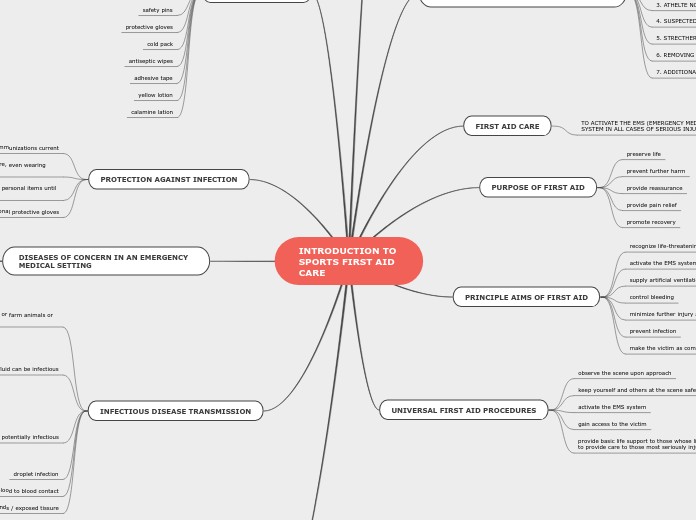Communicable and Noncommunicable Diseases and New Developments in Antibiotics
What is happening with antibiotics?
Antibiotic Resistance:
*Antibiotic resistance occurs when an antibiotic has lost its ability to effectively control or kill bacterial growth; in other words, the bacteria are "resistant" and continue to multiply in the presence of therapeutic levels of an antibiotic.
Preventing Antibiotic Resistance:
*Take antibitiocs exactly as the doctor prescribes. Do not skip doses. Complete the prescribed course of treatment, even when you start feeling better.
*Only take antibiotics prescribed for you; do not share or use leftover antibiotics. Antibiotics treat specific types of infections. Taking the wrong medicine may delay correct treatment and allow bacteria to multiply
*Dont save antibiotics for the next illness. Discard any leftover medication once the prescribed course of treatment is completed.
*Do not ask for antibiotics when your doctor thinks you do not need them. Remember, antibiotics have side effects. When your doctor says you don't need an antibiotic, taking on might do more harm than good.
*Prevent infections by practicing good hand hygiene and getting recommended vaccines.
Why is this happening?
*Since the discovery in the 1940s, scientists prophesied the defeat of infectious diseases that had plagued humanking throughout history. However, the remarkable healing power of antibiotics that invites widespread and often inappropriate use.
*The misuse and overuse of antibiotics leads to antibiotic resistance among bacteria and consequent treatment complications and increased heatlhcare costs.
What are noncommunicable diseases?
*NONCONTAGIOUS
*Non-communicable diseases are responsible for 3.9 million deaths each year in the Region of the Americas, representing 3.4 of all deaths.
*An estimated 200 million people in the Americas are living with NCDs, which has a tremendous impact on their life, well-being, and ability to work. This, in turn, poses major challenges to the economy, the heatlh system and other sectors of society.
*Four main NCDs are responsible for the greatest burden: cardiovascular diseases, diabetes, cancer, and chronic respiratory diseases.
Types of noncommunicable diseases:
*Examples include diabetes. cancer, cardiovascular diseases, and chronic respiratory diseases.
How can you prevent them?
It is estimated that if these modifiable
risk factors were eliminated, 80% of
all heart disease, stroke, and type 2
diabetes would be prevented and over
40% of cancer would be prevented.
Noncommunicable diseases are diseases that are not contagious.
What causes them?
NCD's can be caused by:
*tobacco use
*unhealthy diet
*insufficient physical activity
*harmful use of alcohol
*Chronic diseases: Cardiovascular diseases including hypertension, cancers, diabetes, and chronic respiratory diseases.
*Biological Risk Factors:
-Modifiable: Overweight/obesity, high cholesterol levels, high blood sugar, high blood pressure.
-Non-modifiable: age, sex, race, genetics
*Behavioral Risk Factors: Tobacco use, unhealthy diet, physical inactivity, alcohol use
*Environmental Determinants: Social, economic, political conditions, such as income, living and working conditions, physical infrastructure, environment, ecuation, access to health services and essential medicines.
*Global Influences: Globalization, urbanization, technology, migration
What are communicable diseases?
*CONTAGIOUS
*Communicable diseases, also known as infectious diseases or transmissible diseases, are illnesses that result from the infection, presence and growth of pathogenic (capable of causing disease) biologic agents in an individual human or other animal host.
* Infections may range in severity from asymptomatic (without symptoms) to severe and fatal. The term infection does not have the same meaning as infectious disease because some infections do not cause illness in a host.
Types of Communicable Diseases:
*Water Borne disease examples: cholera, typhoid fever, and shigellosis
*Vector-borne disease examples: malaria, dengue, yellow fever, Japanese encephalitis, and Rift Valley Fever
*Diseases associated with overcrowding examples: meningoccal disease, acute respiratory infections, tuberculosis infection, and diarrhoeal diseases
*Vaccine preventable disease examples: polio, tetanus, pertussis, and diphtheria
Water-borne diseases:
Lack of access to safe water and inadequate sanitation facilities transmission of water-borne and food-borne pathogens.
Diarrhoeal diseases can cause epidemics with high rates of mortality.
Vector-borne diseases:
Increased risk of death from alaria arises from weakened immunity due to malnutrition, co-infection, increased exposure to vectors owing to inadequate shelter, and collapse of health services.
Diseases associated with overcrowding:
Measles spreads easily in unvaccinated populations in the crowded conditions and outbreaks are common.
Vaccine-preventable dieases:
These are (obviously)diseases that can be prevented with vaccines.
Communicable diseases are any infectious or contagious diseases.
What causes them?
*Transmission of these biologic agents can occur in a variety of ways, including direct physical contact with an infectious person, consuming contaminated foods or beverages, contact with contaminated body fluids, contact with contaminated inanimate objects, airborne (inhalation), or being bitten by an infected insect or tick.
*Some disease agents can be transmitted from animals to humans, and some of these agents can be transmitted in more than one way.
*Disease causing biologic agents include viruses, bacteria, fungi, protozoa, multicellular parasites, and aberrant proteins known as prions.
Where are they common?
*Areas of population displacement
*Collapsing heatlh services
*Lack of disease control programmes
*Poor access to health care in urban and/or rural areas
*Malnutrition
*Interrupted supplies and logistics
*Poor coordination among agencies
How can you prevent them?
*Make sure any water you drink, and any
food you consume is clean, and safe.
*Wash hands often
*Clean and disinfect commonly used surfaces
*Cough and sneeze into your sleeve
*Don't share personal items
*Get vaccinated
*Avoid touching wild animals
*Stay home when you're sick









